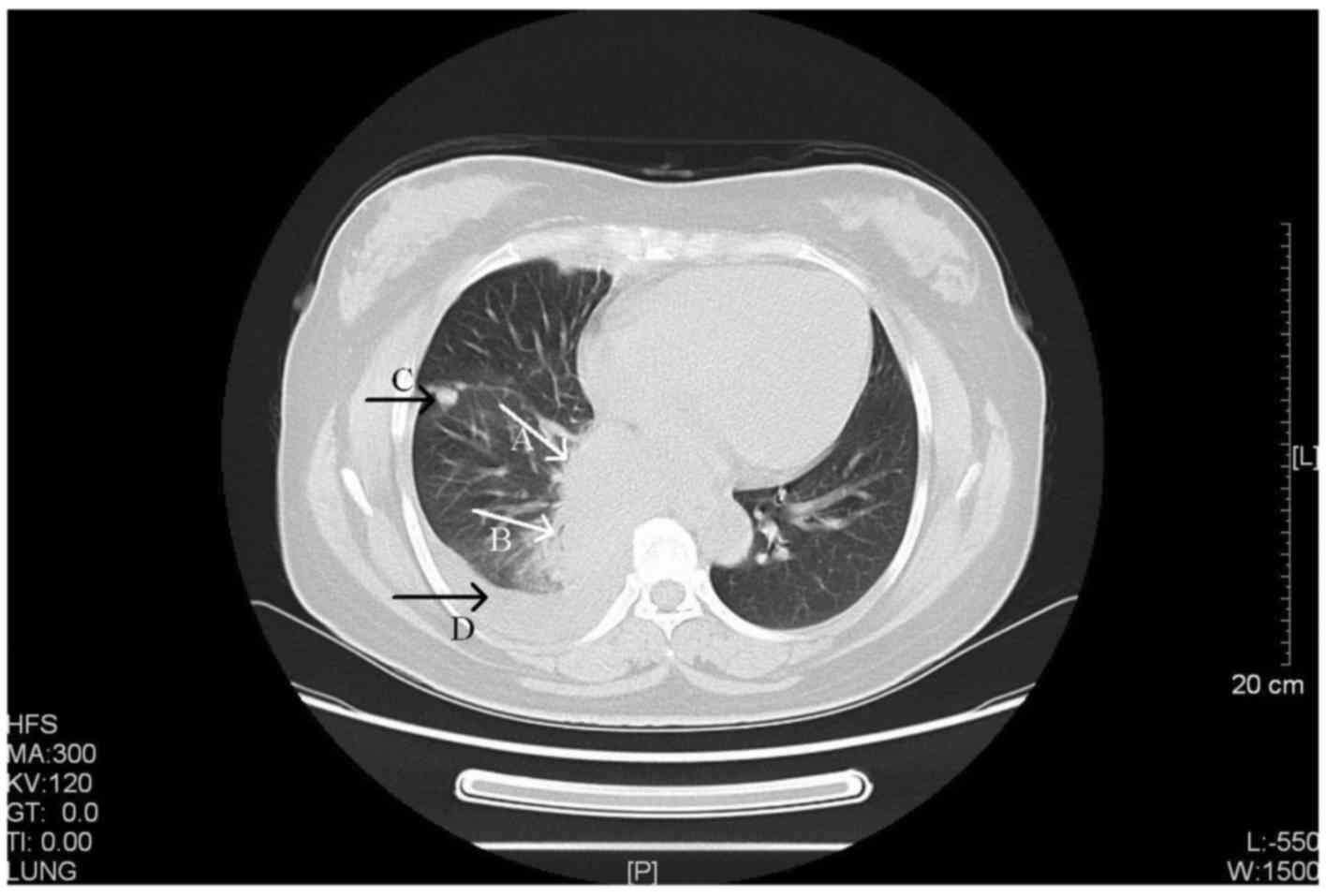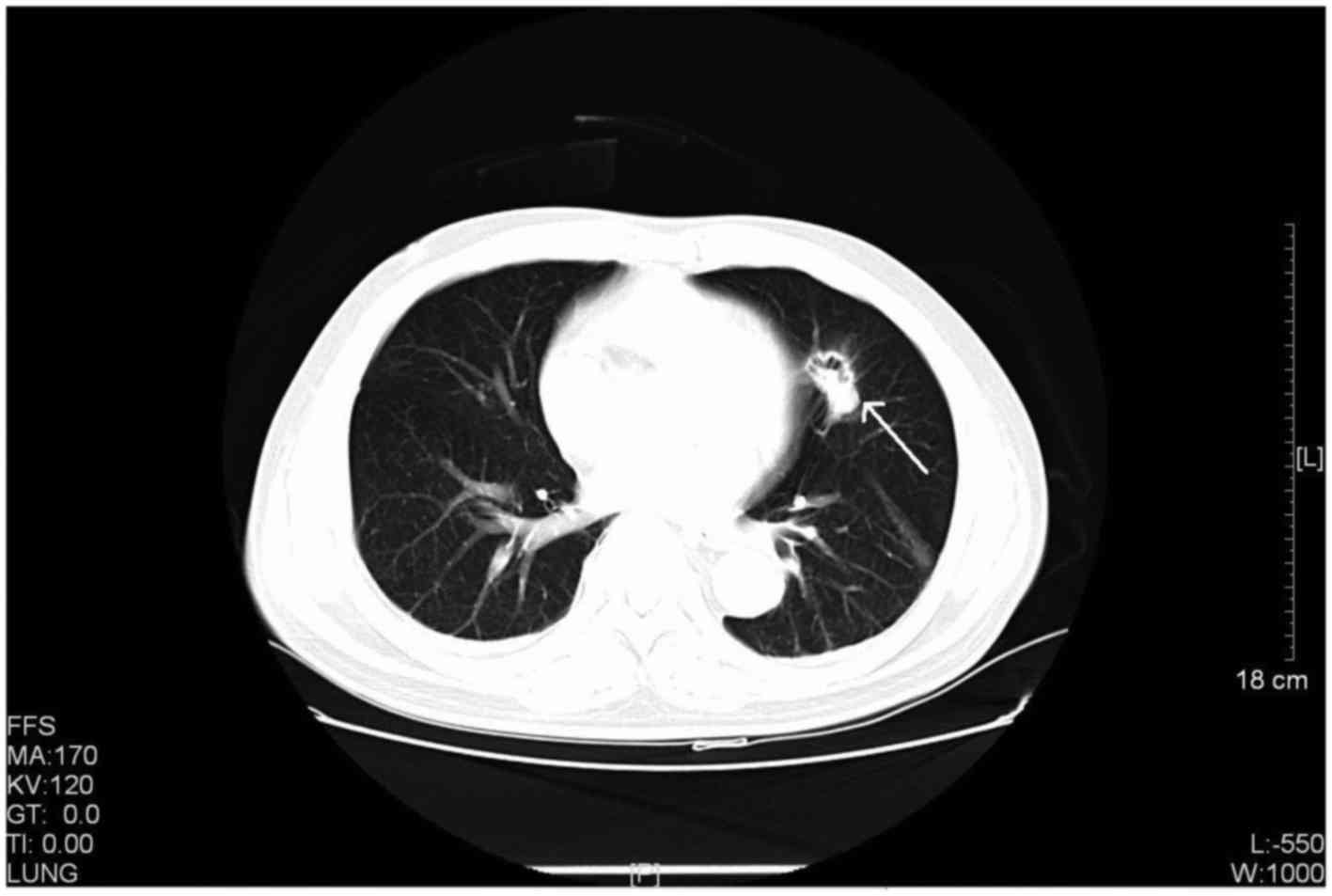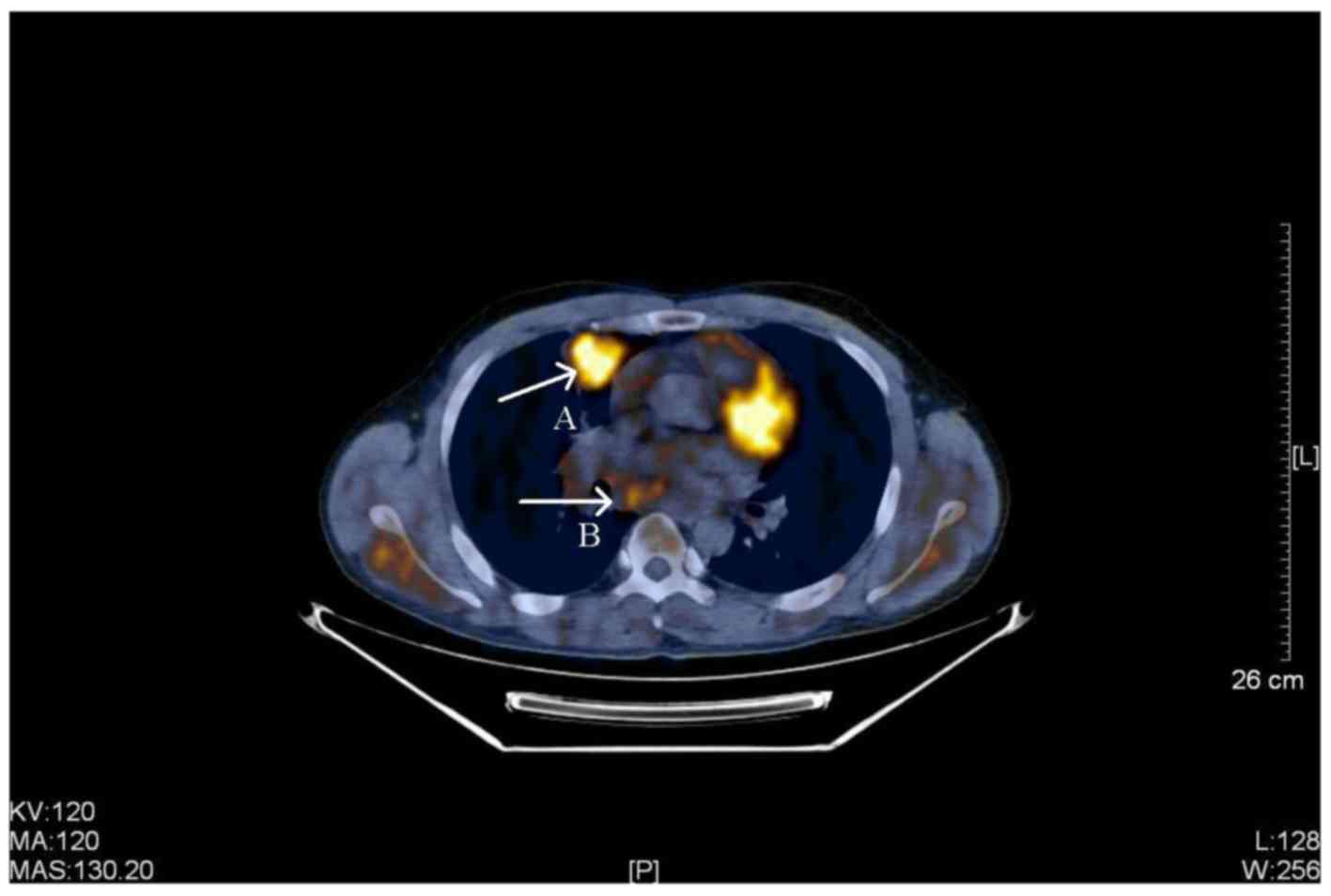|
1
|
Wong JF and Teo MC: Case report:
Lymphoepithelial-like carcinoma of the lung-a chronic disease?
World J Surg Oncol. 10:912012. View Article : Google Scholar : PubMed/NCBI
|
|
2
|
Williamson SR, Zhang S, Lopez-Beltran A,
Shah RB, Montironi R, Tan PH, Wang M, Baldridge LA, MacLennan GT
and Cheng L: Lymphoepithelioma-like carcinoma of the urinary
bladder: Clinicopathologic, immunohistochemical, and molecular
features. Am J Surg Pathol. 35:474–483. 2011. View Article : Google Scholar : PubMed/NCBI
|
|
3
|
Blasi MA, Ventura L, Laguardia M, Tiberti
AC, Sammarco MG and Balestrazzi E: Lymphoepithelioma-like carcinoma
involving the lacrimal gland and infiltrating the eyelids. Eur J
Ophthalmol. 21:320–323. 2010. View Article : Google Scholar
|
|
4
|
Brun JL, Randriambelomanana J, Cherier L,
Lafon ME, Trufflandier N and Le Bail B: Lymphoepithelioma-like
carcinoma of the ovary: A case report and review of the literature.
Int J Gynecol Pathol. 29:427–431. 2010. View Article : Google Scholar : PubMed/NCBI
|
|
5
|
Tseng CJ, Pao CC, Tseng LH, Chang CT, Lai
CH, Soong YK, Hsueh S and Jyu-Jen H: Lymphoepithelioma-like
carcinoma of the uterine cervix: Association with Epstein-Barr
virus and human papillomavirus. Cancer. 80:91–97. 1997. View Article : Google Scholar : PubMed/NCBI
|
|
6
|
Aoki R, Mitsui H, Harada K, Kawamura T,
Shibagaki N, Tsukamoto K, Murata S and Shimada S: A case of
lymphoepithelioma-like carcinoma of the skin associated with
Epstein-Barr virus infection. J Am Acad Dermatol. 62:681–684. 2010.
View Article : Google Scholar : PubMed/NCBI
|
|
7
|
Bégin LR, Eskandari J, Joncas J and
Panasci L: Epstein-Barr virus related lymphoepithelioma-like
carcinoma of lung. J Surg Oncol. 36:280–283. 1987. View Article : Google Scholar : PubMed/NCBI
|
|
8
|
Ho JC, Wong MP and Lain WK:
Lymphoepithelioma-like carcinoma of the lung. Respirology.
11:539–545. 2006. View Article : Google Scholar : PubMed/NCBI
|
|
9
|
Goldstraw P: New TNM classification:
Achievements and hurdles. Transl Lung Cancer Res. 2:264–272.
2013.PubMed/NCBI
|
|
10
|
Chang YL, Wu CT, Shih JY and Lee YC: New
aspects in clinicopathologic and oncogene studies of 23 pulmonary
lymphoepithelioma-like carcinomas. Am J Surg Pathol. 26:715–723.
2002. View Article : Google Scholar : PubMed/NCBI
|
|
11
|
Han AJ, Xiong M and Zong YS: Association
of Epstein-Barr virus with lymphoepithelioma-like carcinoma of the
lung in southern China. Am J Clin Pathol. 114:220–226. 2000.
View Article : Google Scholar : PubMed/NCBI
|
|
12
|
Mo Y, Shen J, Zhang Y, Zheng L, Gao F, Liu
L and Xie C: Primary lymphoepithelioma-like carcinoma of the lung:
Distinct computed tomography features and associated clinical
outcomes. J Thorac Imaging. 29:246–251. 2014. View Article : Google Scholar : PubMed/NCBI
|
|
13
|
Brambilla E, Pugatch B, Geisinger K, et
al: Large cell carcinomaWHO Classification of tumors-pathology
& genetics-tumours of the lung, pleura, thymus and heart. IARC
Press; Lyon: 2004
|
|
14
|
Castro CY, Ostrowski ML, Barrios R, Green
LK, Popper HH, Powell S, Cagle PT and Ro JY: Relationship between
Epstein-Barr virus and lymphoepithelioma-like carcinoma of the
lung: A clinicopathologic study of 6 cases and review of the
literature. Hum Pathol. 32:863–872. 2001. View Article : Google Scholar : PubMed/NCBI
|
|
15
|
Wei WI and Sham JS: Nasopharyngeal
carcinoma. Lancet. 365:2041–2054. 2005. View Article : Google Scholar
|
|
16
|
Ooi GC, Ho JC, Khong PL, Wong MP, Lam WK
and Tsang KW: Computed tomography characteristics of advanced
primary pulmonary lymphoepithelioma-like carcinoma. Eur Radiol.
13:522–526. 2003.PubMed/NCBI
|
|
17
|
Hoxworth JM, Hanks DK, Araoz PA, Elicker
BM, Reddy GP, Webb WR, Leung JW and Gotway MB:
Lymphoepithelioma-like carcinoma of the lung: Radiologic features
of an uncommon primary pulmonary neoplasm. AJR Am J Roentgenol.
186:1294–1299. 2006. View Article : Google Scholar : PubMed/NCBI
|
|
18
|
Ma H, Wu Y, Lin Y, Cai Q, Ma G and Liang
Y: Computed tomography characteristics of primary pulmonary
lymphoepithelioma-like carcinoma in 41 patients. Eur J Radiol.
82:1343–1346. 2013. View Article : Google Scholar : PubMed/NCBI
|
|
19
|
Shen DH, Cheng CY, Lin LF, Gao HW, Cheng
YL and Chen CY: Conversion from FDG-negative to-positive during
follow-up in a rare case of pulmonary lymphoepithelioma-like
carcinoma. Clin Nucl Med. 37:679–681. 2012. View Article : Google Scholar : PubMed/NCBI
|
|
20
|
Ding Q, Hua Y, Guan Y, et al: A
comparative study of PET and PET/CT in solitary pulmonary nodules.
Chin J Nucl Med. 25:261–263. 2005.(In Chinese).
|
|
21
|
Xia J, Jiang L, Zhang J, Miao Q, Xin Y,
Zhong R, Zhao Y and Han B: The clinical analysis of 21 patients
with lymphoepithelioma-like carcinoma after operation. Zhongguo Fei
Ai Za Zhi. 12:1169–1173. 2009.(In Chinese). PubMed/NCBI
|
|
22
|
Liang Y, Wang L, Zhu Y, Lin Y, Liu H, Rao
H, Xu G and Rong T: Primary pulmonary lymphoepithelioma-like
carcinoma: Fifty-two patients with long-term follow-up. Cancer.
118:4748–4758. 2012. View Article : Google Scholar : PubMed/NCBI
|
|
23
|
Han AJ and Xiong M, Gu YY, Lin SX and
Xiong M: Lymphoepithelioma-like carcinoma of the lung with a better
prognosis: A clinicopathologic study of 32 cases. Am J Clin Pathol.
115:841–850. 2001. View Article : Google Scholar : PubMed/NCBI
|
|
24
|
NCCN clinical practice guidelines in
oncology NSCLC.V3.2011. National Comprehensive Cancer Network.
https://www.nccn.org/
|
|
25
|
Huang CJ, Feng AC, Fang YF, Ku WH, Chu NM,
Yu CT, Liu CC, Lee MY, Hsu LH, Tsai SY, et al: Multimodality
treatment and long-term follow-up of the primary pulmonary
lymphoepithelioma-like carcinoma. Clin Lung Cancer. 13:359–362.
2012. View Article : Google Scholar : PubMed/NCBI
|
|
26
|
Chang YL, Wu CT, Shih JY and Lee YC:
Unique p53 and epidermal growth factor receptor gene mutation
status in 46 pulmonary lymphoepithelioma-like carcinomas. Cancer
Sci. 102:282–287. 2011. View Article : Google Scholar : PubMed/NCBI
|












